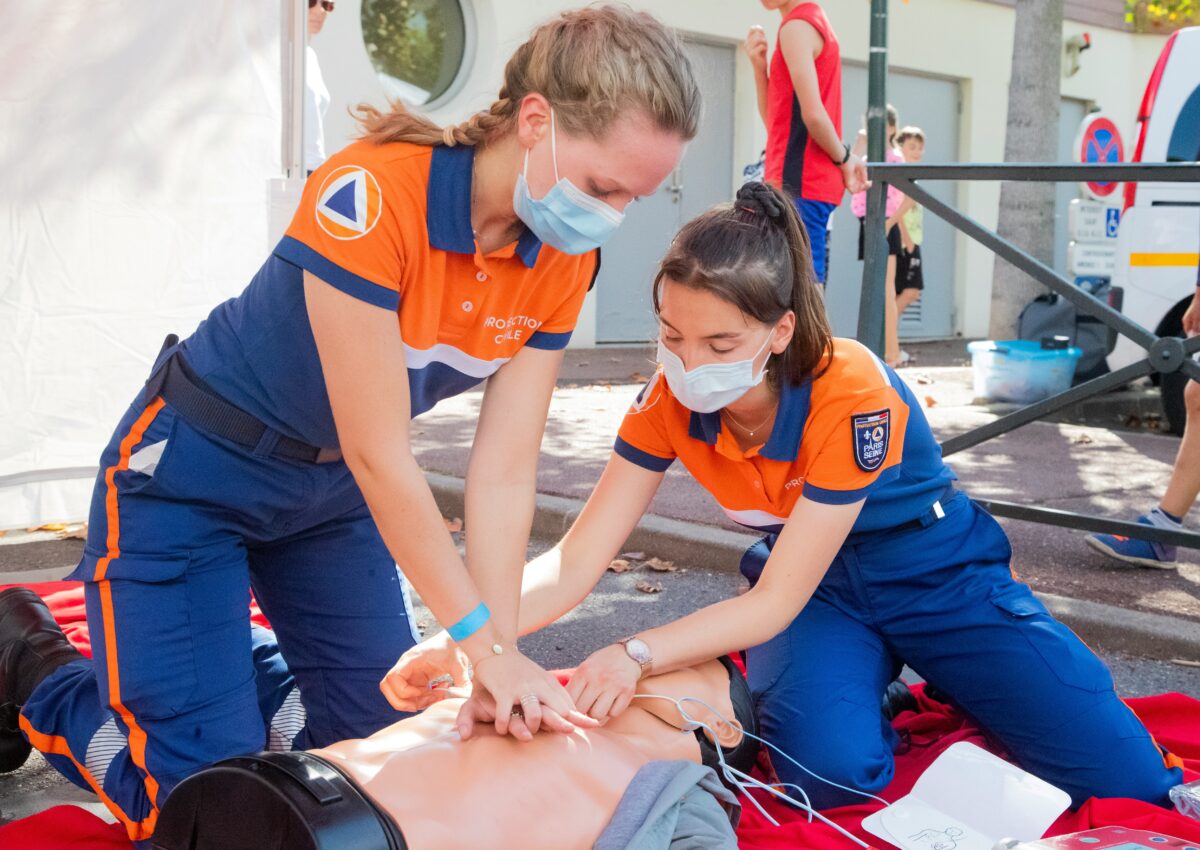Emergencies can happen anytime and anywhere. People might get unconscious and there can be several underlying reasons for that. Encountering someone who is unconscious can be extremely challenging, especially if you are not aware of first aid skills. Over 63% of the US population are not confident enough to help someone during a first aid emergency. Whether a person has lost consciousness due to health issues or something else, it is crucial for everyone to be familiar with basic first aid including CPR (cardiopulmonary Resuscitation) and AED (Automated External Defibrillator) administration.
This blog will highlight the important steps and safety measures that can be administered when a person is unconscious. Let’s go through the vital techniques that can truly make a difference.
Master ACLS Now
Get ACLS certified with confidence
What should be the procedure of first aid when a patient is unconscious and non-responsive?
When faced with the alarming situation of an unconscious and non-responsive individual, knowing the proper first aid procedures can be lifesaving. Immediate action is crucial to ensure the person’s safety and well-being. Here’s a concise guide outlining the step-by-step procedure to follow in such a scenario:
- Assess the Scene: Before approaching the person, ensure that the surrounding environment is safe for both you and the individual. Look for any potential hazards or dangers that could pose a risk.
- Check for Responsiveness: Gently tap the person and ask loudly, “Are you okay?” If there’s no response, carefully observe for any signs of breathing.
- Call for Help: If the person is unresponsive and not breathing normally, or you suspect a serious injury, immediately call emergency services (911 or your local emergency number) for assistance.
- Open the Airway: Carefully tilt the person’s head back and lift their chin to open the airway. This helps ensure that the person can breathe freely.
- Check for Breathing: Place your ear close to the person’s mouth and nose while looking at their chest for any signs of breathing. Listen and feel for air movement for up to 10 seconds.
- Begin CPR (Cardiopulmonary Resuscitation): If the person is not breathing normally, start CPR immediately. Position your hands in the center of the person’s chest and perform chest compressions at a rate of 100 to 120 compressions per minute.
- Provide Rescue Breaths: If you are trained in CPR and comfortable performing rescue breaths, administer two breaths after every 30 chest compressions. Ensure proper head tilt and chin lift to maintain an open airway.
- Continue CPR Until Help Arrives: Keep performing CPR until emergency medical services arrive or until the person shows signs of responsiveness and normal breathing.
Read More: What are the reversible causes of cardiac arrest? Know the 4 T’s and H’s.
What are the probable reasons why a person can go unconscious?
Unconsciousness, often a distressing and alarming state, can result from various underlying causes ranging from medical conditions to traumatic injuries. Understanding these potential reasons is crucial in providing appropriate care and seeking prompt medical attention. Here are some common factors that can lead to unconsciousness:
- Medical Conditions:
- Syncope (Fainting): Temporary loss of consciousness due to a sudden drop in blood pressure, often triggered by emotional stress, pain, or standing up too quickly.
- Seizures: Uncontrolled electrical activity in the brain can cause seizures, resulting in loss of consciousness and convulsions.
- Hypoglycemia: Low blood sugar levels, commonly seen in diabetic individuals, can lead to unconsciousness if left untreated.
- Stroke: Interruption of blood flow to the brain, either due to a blood clot or burst blood vessel, can result in unconsciousness along with other neurological symptoms.
- Heart Conditions: Certain heart rhythm disturbances or cardiac events such as a heart attack can lead to loss of consciousness.
- Head Injury: Traumatic brain injury, such as concussion or severe head trauma, can cause unconsciousness depending on the severity of the injury.
- Environmental Factors:
- Heat Stroke: Prolonged exposure to high temperatures can lead to heatstroke, characterized by unconsciousness, along with symptoms like high body temperature and confusion.
- Carbon Monoxide Poisoning: Inhalation of carbon monoxide gas, often from faulty heating systems or poorly ventilated spaces, can lead to unconsciousness and even death.
- Toxic Ingestion:
- Drug Overdose: Consumption of excessive amounts of drugs or substances, including prescription medications, illicit drugs, or alcohol, can result in unconsciousness.
- Poisoning: Ingestion of toxic substances, such as household chemicals or pesticides, can lead to loss of consciousness depending on the type and amount ingested.
- Neurological Disorders:
- Epilepsy: Recurrent seizures characteristic of epilepsy can sometimes cause loss of consciousness.
- Brain Tumors: Intracranial tumors can exert pressure on the brain and disrupt normal neurological function, leading to unconsciousness among other symptoms.
Read More: Know the resuscitation triangle team roles in ACLS.
Conclusion
Recognizing the potential causes of unconsciousness is essential for administering appropriate first aid. This will also help the patient get medical assistance promptly. In any case of unconsciousness, it is imperative to prioritize the individual’s safety and well-being by initiating emergency response procedures. Learn how to provide first aid for unconscious person and get the power to help people in times of emergency and unpredictability.







